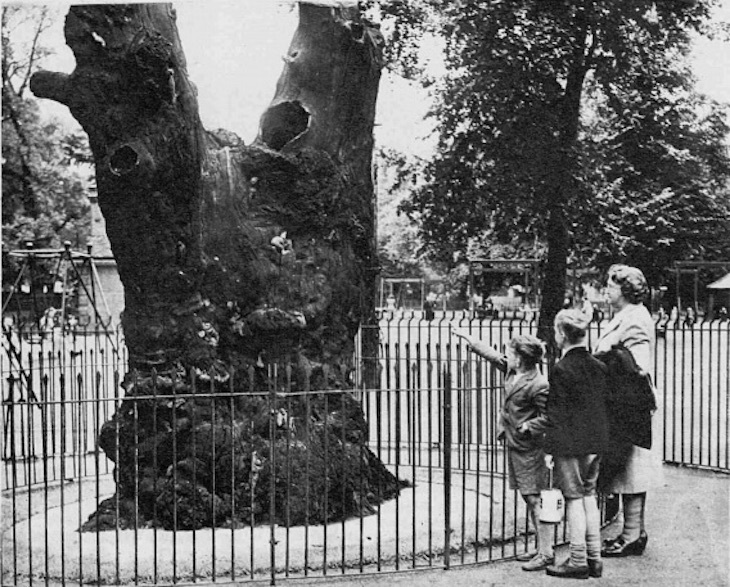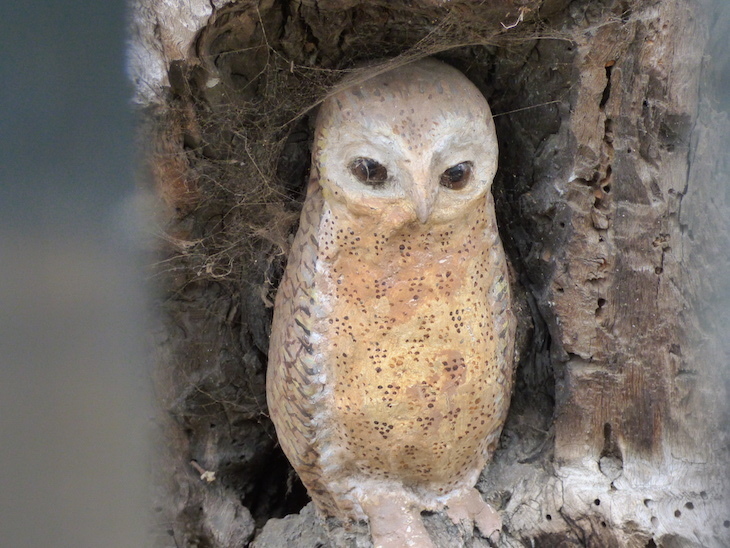
Kensington Gardens isn't short of a tree or two, but one stands out from all the others. The protective cage around it — which puts us in mind of the listed (and no longer used) raven's cage at London Zoo — makes sure of that. But it's not home to anything living — or at least not at first glance.

Step a little closer though, and figures start to emerge. Fairies, elves, and even an owl peer out from the cracks and crevices of the aged wood. They're not real of course, but we reckon they've sparked the imaginations of a fair few children (and adults) in their time.

The Elfin Oak, as it's properly known, was carved by children's book illustrator Ivor Innes. Despite its regal location in William and Kate's front garden, the woodworm-riddled tree stump actually originated from another of the Royal Parks, Richmond.

It was moved in 1928, as part of then-Commissioner of Works George Lansbury's plan to improve London's parks (he was also responsible for the creation of the nearby Serpentine lido). Newspapers at the time dubbed the new attraction 'Uncle George's Gnomeland'.

Innes spent two years carving and painting the hollow log before finally unveiling his work in 1930. Some of the figures are carved into the oak themselves, while others are made from plaster.
The sculpture depicts the world of Little People, a Victorian obsession which inspired Peter Pan author JM Barrie. Characters carved on the tree include Wookey the witch, Hucklebury the gnome, Grumples and Groodle.

After the work was unveiled, Innes' wife Elsie Innes wrote a children's book inspired by these characters, which he illustrated.

The tree wasn't always as fiercely protected as it is now. The above photo from 1951 shows it encircled by a single (and, if one was so inclined, easily-climbable) fence, and that fence may not have been present at all in the stump's early years.

The first restoration of the tree took place that same year, spearheaded by comedian Spike Milligan. Prior to the restoration, newspaper The Sphere described the carvings as 'colourless', their original paint having faded over their 20 years exposed to the elements.

In the mid 1960s Milligan led another two year restoration of the mystical creatures, after which The Tatler described the tree as "an attractive curiosity".
30 years later in 1996, Milligan was once again involved — clearly working as a poet, comedian, writer, musician, playwright and actor wasn't fulfilling enough — in raising money for a restoration project.

In 1997, the tree was given Grade II listed status by Heritage Minister Tony Banks. If it looks familiar, it appeared on the inside cover of 1969 Pink Floyd album Ummagumma, with David Gilmour posing in front of it.
While you're in the area, look out for the secret stones of Kensington Gardens and of course, the Peter Pan statue.




